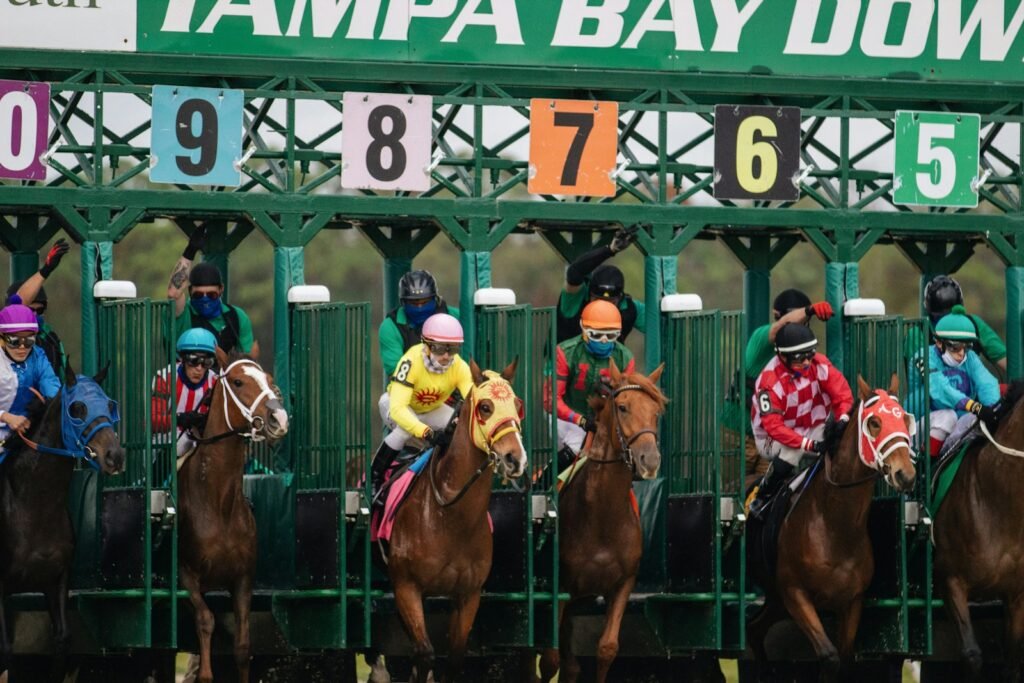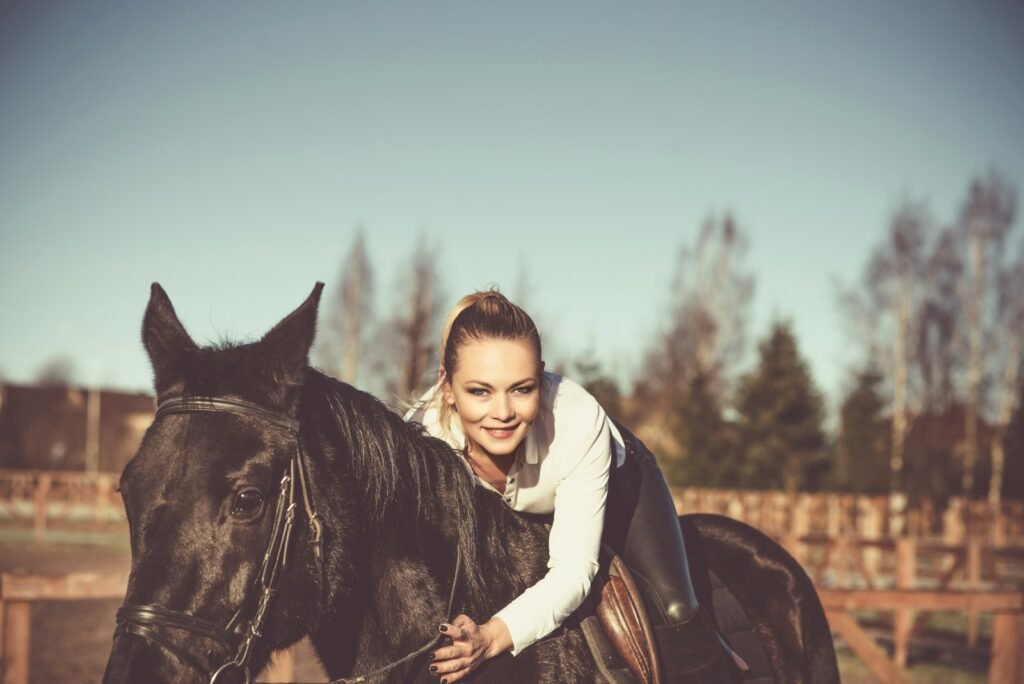
Introduction
What if we told you the world’s top jockeys aren’t just athletes—they’re million-dollar entrepreneurs on horseback? Forget the old stereotypes of horse racing as a dusty, old-school sport. Today’s elite riders, like Frankie Dettori (who pocketed $15 million in his final season) or Japan’s Yutaka Take (a legend with $800+ million in career earnings), are rewriting the rules of fame and fortune. These jockeys aren’t just sprinting toward finish lines; they’re sprinting toward paychecks that dwarf what most pro athletes earn in a year.
But how? The answer lies in a high-stakes cocktail of precision, promotion, and globe-trotting grit. From Dubai’s opulent Meydan Racecourse to the roaring crowds of the Kentucky Derby, the best jockeys chase prize money, sponsorships, and a slice of racing immortality. And while their careers might look glamorous—think designer silks and champagne celebrations—the reality involves 3 AM workouts, brutal weight cuts, and constant risk.
In this article, we’ll pull back the curtain on the highest paid jockeys, revealing how they turn horsepower into earning power. You’ll meet the icons dominating leaderboards, uncover their income-boosting hacks (yes, TikTok counts), and learn why this career is equal parts thrilling and unforgiving. Buckle up—it’s going to be a wild ride.
The Top 5 Highest Paid Jockeys (2023–2024)

You might think jockeys are just riders, but the sport’s biggest stars are master strategists, brand builders, and global icons. Let’s meet the five jockeys dominating the earnings leaderboard—and learn what sets them apart.
1. Frankie Dettori: The Showman
Annual Earnings: $15–20 million
Signature Move: His infamous “flying dismount” after big wins.
Why He’s on Top: After 35+ years in the saddle, the Italian-British legend turned his 2023 “farewell tour” into a financial windmill. He nabbed wins at the Breeders’ Cup, Royal Ascot, and Dubai World Cup, earning 10% cuts from multi-million-dollar purses. But his real secret? Brand power. Dettori’s partnerships with Rolex, Hugo Boss, and even Pizza Express (yes, really) keep his income flowing off the track.
Fun Fact: He once named a racehorse after his favorite pizza topping.
2. Yutaka Take: Japan’s $800 Million Man
Annual Earnings: $10–12 million
Signature Move: Consistency. He’s won Japan’s premier races for three decades.
Why He’s on Top: Take dominates Asia’s booming horse racing scene, where the Japan Cup and Tokyo Yushun (Derby) offer prize pools rivaling the Kentucky Derby. He also invests in horse ownership and trains young riders, ensuring his wealth outlasts his riding career.
Global Reach: Races in Saudi Arabia’s $20 million Saudi Cup—because why not?
3. Ryan Moore: The Silent Assassin
Annual Earnings: $8–10 million
Signature Move: Letting his riding do the talking (he’s famously media-shy).
Why He’s on Top: Moore is the go-to jockey for Coolmore Stud, the world’s richest racing syndicate. He pilots their elite thoroughbreds in marquee events like the Epsom Derby and Prix de l’Arc de Triomphe. His “no-nonsense” reputation? A branding win—sponsors like Adidas and Rolex love his “quiet professionalism.”
4. Christophe Soumillon: Europe’s Speed Merchant
Annual Earnings: $7–9 million
Signature Move: Aggressive racing tactics (and occasional controversy).
Why He’s on Top: Soumillon thrives in Europe’s high-stakes circuit, winning France’s Arc and Ireland’s Champion Stakes. But his secret weapon? Social media savvy. With 500k+ Instagram followers, he partners with luxury brands like Longines and Hermès, proving jockeys can be influencers too.
5. Rachel King: Breaking Barriers (and Paychecks)
Annual Earnings: $4–5 million
Signature Move: Smashing gender stereotypes in a male-dominated sport.
Why She’s on Top: Australia’s rising star, King dominates races like the Golden Slipper and Melbourne Cup. While her earnings are lower than her male peers (a lingering industry gap), she’s closing in via sponsorships with brands like TAB and Magic Millions. Her advocacy for women in racing? Priceless.
What’s Their Common Thread?
These jockeys aren’t just winning races—they’re building empires. From Soumillon’s Instagram fame to Take’s business ventures, they diversify income like CEOs. But how exactly do they turn silks into gold? Let’s gallop into the economics next…
How Do Jockeys Earn Millions? Key Factors

Ever wondered how jockeys turn their track success into seven-figure incomes? Spoiler: It’s not just about crossing the finish line first. Let’s break down the hustle behind the wealth—no riding boots required.
1. Race Winnings: The 10% Golden Rule
Jockeys typically pocket 5–10% of a race’s prize money if they win (and 1–5% for placing). That might sound small, but when the purse is $3 million (like at the Breeders’ Cup Classic), a 10% cut means $300,000 for one afternoon’s work.
- Pro Tip Top jockeys prioritize high-stakes races. For example, winning the Dubai World Cup ($12 million purse) nets over $1 million in earnings.
- LSI Keywords: Stakes races, purse splits, thoroughbred racing.
2. Sponsorships: From Silks to Supercars
Forget racehorses—jockeys are now branding powerhouses.
- Apparel Deals: Brands like Adidas and Gucci collaborate with jockeys to design riding gear.
- Lifestyle Partnerships: Frankie Dettori reps Rolex; Christophe Soumillon partners with Longines.
- Equine Tech: Startups pay jockeys to promote GPS trackers or saddle tech.
Fun Fact: Ryan Moore once turned down a reality TV gig to focus on racing—but still earns six figures from quiet Adidas deals.
3. Global Grind: Chasing the World’s Richest Races
The best jockeys are frequent fliers. Why?
- Middle East Money: Saudi Cup ($20 million purse) and Dubai World Cup lure riders with private jets and luxury stays.
- Asia’s Boom: Japan’s Arima Kinen and Hong Kong’s International Races offer massive payouts.
- Europe’s Prestige: The Prix de l’Arc de Triomphe (France) and Royal Ascot (UK) blend tradition and cash.
4. Media & Personality: The Social Media Gallop
Jockeys aren’t just athletes—they’re content creators.
- Instagram & TikTok: Christophe Soumillon shares behind-the-scenes training clips (and his Hermès swag) to 500k+ followers.
- Documentaries: Netflix’s Jockey series boosted the sport’s visibility—and rider paychecks.
- Commentary Gigs: Retired legends like Jerry Bailey earn hefty fees as TV analysts.
5. Longevity: The Art of Staying in the Saddle
A jockey’s peak earning years are short (age 25–40), but the smart ones stretch their careers:
- Fitness: Yoga, swimming, and weight training keep bodies race-ready.
- Mentorship: Veteran jockeys like Yutaka Take train younger riders for a cut of their earnings.
- Diversification: Investing in horse ownership, breeding, or racing syndicates (like Coolmore Stud).
The Bottom Line
Think of top jockeys as hybrid athletes-CEOs. They mix prize money with branding, globetrotting, and media savvy to build wealth. But here’s the kicker: For every Frankie Dettori, there are hundreds of jockeys scraping by on $30k a year. Which begs the question—what’s the dark side of this glittering career? Let’s tackle that next…
The Challenges Behind the Glamour
Let’s get real: For every champagne spray and trophy lift, there’s a steep price paid by the world’s top jockeys. The glitz of the winner’s circle hides a grind that’s equal parts physically brutal and mentally exhausting. Here’s what the Instagram feeds don’t show.
1. Physical Risks: “It’s Not If You’ll Get Hurt—It’s When”
Horse racing is one of the most dangerous sports on Earth. Jockeys face:
- High-Speed Crashes: A fall at 40+ mph can mean broken bones, concussions, or worse. Legendary rider Ruby Walsh retired after 59 fractures.
- Lifetime Wear-and-Tear: Chronic pain from years of crouching in the saddle (think: ruined knees and backs).
- No Off-Season: Racing schedules span 8–10 months yearly, leaving little time to heal.
2. Weight Management: The 1,000-Calorie Dilemma
To meet racing weight limits (often 110–118 lbs), jockeys resort to extreme measures:
- Sauna Suits & Fasting: Some starve for days or sweat out 5+ lbs before a race.
- Eating Disorders: A 2022 study found 40% of jockeys battle unhealthy weight-control habits.
- No Room for Error: Gain 2 lbs? You might lose your ride—and paycheck—to a lighter rival.
Fun Fact: Frankie Dettori once joked he’d “kill for a cheeseburger” during his racing days.
3. Competition: Young Guns and Short Shelf Lives
Jockeys peak young, but staying relevant is a battle:
- Age Pressure: Most retire by 45, facing younger, hungrier talent.
- Limited Opportunities: Only 10–15% of races offer life-changing prize money.
- Politics: Securing rides on top horses often depends on trainers’ favor, not just skill.
4. Financial Instability: The “Other 99%” Struggle
While stars like Dettori earn millions, the average jockey’s reality is grim:
- Median Income: Just $48,000/year in the U.S., per the Jockeys’ Guild.
- No Guarantees: No salary—earnings depend on race placements.
- Costs Add Up: Agents take 25% of winnings; insurance and gear drain savings.
5. Gender Gap: Women Fight Harder for the Same Check
Even stars like Rachel King face uphill battles:
- Fewer Rides: Female jockeys get just 10% of mounts in major U.S. races.
- Pay Disparity: Women earn 30–40% less than male peers for similar wins.
- Stereotypes: “Too weak” or “not aggressive enough” myths persist, despite proven success.
Why Do They Do It?
For the love of the sport—and the adrenaline rush no paycheck can match. As retired Hall of Famer Julie Krone put it: “Riding a racehorse is like flying without wings. You’ll risk anything to feel it again.”
But before you romanticize the job, let’s tackle your burning questions…
Conclusion
So, what’s the ultimate takeaway from the whirlwind world of horse racing’s highest earners? It’s this: The path to becoming a top-paid jockey isn’t a sprint—it’s a steeplechase. These athletes blend once-in-a-lifetime talent with ruthless business savvy, all while dodging career-ending risks. They’re not just riding horses; they’re riding opportunities, trends, and sometimes, pure luck.
From Frankie Dettori’s pizza-branded empire to Rachel King’s trailblazing wins, the stories we’ve explored prove that success here isn’t just about speed. It’s about resilience (ask Yutaka Take, still racing at 54), reinvention (shout-out to jockeys-turned-influencers), and refusing to let setbacks—or societal stereotypes—hold you back.
But let’s not sugarcoat it: For every rags-to-riches tale, there’s a rider who gambled everything and lost. The sport’s glamour is real, but so are its bruises, broken bones, and brutal inequalities.
Yet, that’s the magic of horse racing. It’s a world where passion overrides logic, where a split-second decision can earn you a fortune, and where the bond between rider and horse defies explanation. Whether you’re a casual fan or a budding jockey, there’s a lesson here for everyone: Greatness demands risk.
So, the next time you watch the Kentucky Derby or Dubai World Cup, remember—you’re not just seeing a race. You’re witnessing decades of grit, strategy, and dreams galloping toward a paycheck. And who knows? Maybe you’ll spot the next legend in the making.
Until then, keep cheering, keep questioning, and maybe—just maybe—don’t skip arm day.
FAQs About Jockey Salaries
How do jockeys actually get paid?
Think of it like freelancing on horseback. Their income comes from:
1. Prize Money Cuts: 5–10% of winnings if they win (e.g., 30kfroma30kfroma300k race).
2. Mount Fees: Flat rates (often $50–200) just for riding, win or lose.
3. Sponsorships: Monthly retainers or per-post social media deals.
4. Bonuses: For hitting milestones (e.g., “Win 10 races, get $10k extra”).
But here’s the catch: Agents take 20–25% of their earnings. Ouch.
Do female jockeys earn as much as male jockeys?
Not yet—but the gap is shrinking. For example:
1. Rachel King (Australia) earns ~$4 million/year, close to mid-tier male peers.
2. Hollie Doyle (UK) became the first woman to win a Royal Ascot race in 2023, doubling her sponsorship deals.
3. But… Women still get fewer high-profile rides. In the U.S., female jockeys earn ~30% less on average.
Silver lining: Brands now push for equality, so female riders are gaining leverage.
What’s the career span of a top jockey?
Shorter than your favorite Netflix series. Most retire by 45 due to:
1. Injuries: The body can’t handle decades of crashes.
2. Weight Struggles: Maintaining 110–118 lbs gets harder with age.
3. Competition: Younger jockeys (some as young as 16!) snatch opportunities.
Exceptions exist: Yutaka Take, 54, still races—thanks to Japan’s lighter weight limits and his cult-hero status.
Can jockeys negotiate their prize money percentage?
Yes—if they’re superstars. Top riders like Frankie Dettori demand 10% (vs. the standard 5–8%) for big races.
1. Secret Weapon: Agents. They haggle for higher cuts, better mounts, and appearance fees.
2. But… Newbies have zero leverage. They take what they’re given.
Pro Tip: Winning a Triple Crown race? That’s when you call your agent and demand a raise
Is there a retirement plan for jockeys?
A: Mostly DIY. Unlike NFL or NBA stars, few jockeys get pensions. They rely on:
1. Savings: Smart riders invest in real estate or horse ownership.
2. Post-Career Gigs: Training, commentary, or brand ambassadorship.
3. Charities: Organizations like the Permanently Disabled Jockeys Fund help injured riders.
RELATED POSTS
View all

